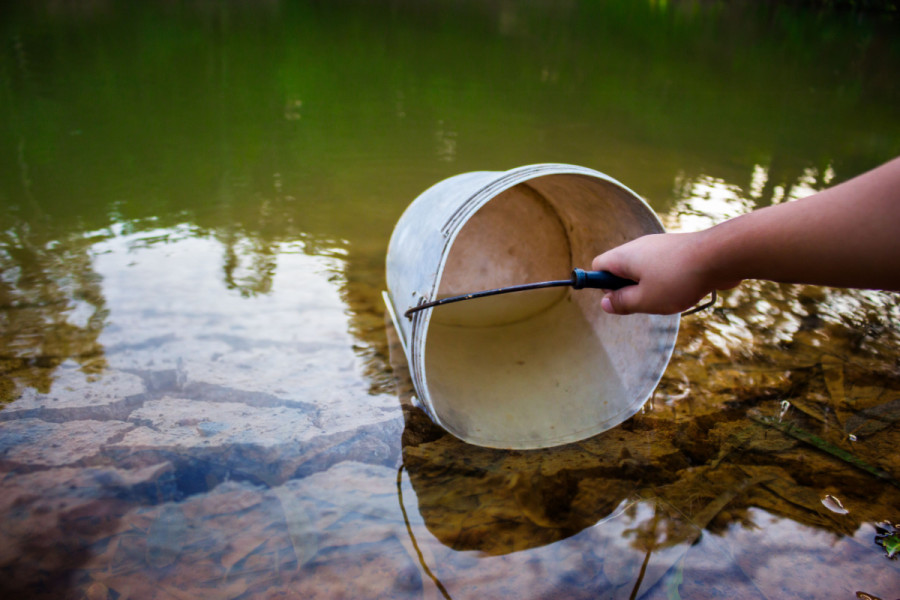Columns
Saving children from drowning
Among more than 1,500 drowning deaths in Nepal in 2019, 31.8 percent were children under five.
Puspa Raj Pant
Open and easy access to water carries the principal risk to drowning. Anyone living near open water sources such as ditches, ponds, irrigation canals or rivers, and those who lack swimming skills, are at a high risk of drowning. Most drownings among toddlers or young children occur in water bodies inside or nearby their homes. Nepali media also periodically reports some such incidents. It is heartbreaking to read about child death in buckets or similar containers of water used for domestic purposes, i.e., drinking, cooking, or cleaning. Despite being an invaluable resource, water stored inside the homes often becomes a cause of death for the youngest members of families.
Globally, drowning is considered a silent killer of children under five, who make the highest percentage of total drownings. According to the latest World Health Organization (WHO) estimates, 47,800 children under five years died worldwide from drowning in 2019. This is 20.3 percent of the fatal drownings that occurred in 2019.
Bucket-water drowning in Nepal
In 2019, more than 1,500 drowning deaths occurred in Nepal; 31.8 percent of them were children under five. Drowning is the 10th major cause of death for children of this age group. In other words, drowning kills nearly 18 per 100,000 children below five years every year in Nepal, more than whooping cough, malnutrition, measles and tetanus. Drowning is the cause of 2.8 percent of the under five-year child mortality in Nepal. The lack of a national drowning database prevents more detailed knowledge about drownings. However, Nepal Police keeps records of unnatural deaths. According to these records, nearly 10 percent of total drowning cases were of children under five years old. Since not all deaths are recorded, information regarding the magnitude of the drowning problem in Nepal is largely unknown. Reporting a complete picture of any issue might be beyond the remit and responsibility of the media, but it has an invaluable contribution to assessing the breadth of drowning—a neglected topic concerning children’s safety.
On March 17, 2023, a toddler drowned to death in Tarakeshwor Municipality, in the outskirts of Kathmandu, after drowning in a water drum inside the washroom. The toddler was found unconscious and was rushed to a super speciality hospital six kilometres away from the site of the incident. It is not reported how the child was transported and whether the child was given any first aid before being taken to the hospital. The child reportedly succumbed while receiving treatment.
A quick scan of media reports indicates an appalling situation of water safety, lack of adequate child supervision and parental familiarity with simple drowning prevention measures. Between March 2016 and March 2023, a reported 34 children of one to 48 months were killed due to contact with bucket water near their homes. An equal number of boys and girls were found drowned in buckets storing water for domestic purposes or similar potable water containers. Among the deceased children, 30 were two years or less, and the girls were younger than the boys. The average age for girls was 17 months, while it was 21 months for boys. This account does not include drownings in nearby ditches, tanks, and wells.
Seeking accountability
Global drowning prevention communities are working hard to compile and collate evidence of effective drowning prevention strategies worldwide. Recently, the WHO has highlighted preventing drowning by providing daycare and basic swimming and water safety skills. The United Nations has called the member states to expedite national drowning prevention actions and commemorate World Drowning Day on July 25 each year. Some countries have reduced drowning by collaborating with communities, mobilising wider stakeholders, and considering safety precautions at home, leisure, and workplaces.
Every child has the right to life and protection as per the Constitution of Nepal 2015, the Children’s Act 2018, and the Convention of the Rights of Children 1990. The state is responsible for preparing parents with adequate parenting skills and ensuring minimum safety standards where children live, study and play. In Nepal, the National Child Rights Council (NCRC) is accountable for ensuring child rights protection and promotion, facilitating policy consultation and capacity development at all three tiers of governance. The Ministry of Health and Population (MoHP), WHO’s focal ministry for population health, is mandated to formulate a National Water Safety Strategy and its implementation in close coordination with the relevant stakeholders.
Separation of individuals from hazards is the primary preventative measure in injury prevention. It is crucial to prevent toddlers and young children from drowning. This could be achieved by covering the bucket or water containers after use and keeping them out of reach of children. In addition, elders should give full attention to the child, for instance avoiding the use of mobile phones when looking after children. Locking the toilets is another measure since some toddlers drown in bucket water there. Also, the bucket of water left in the courtyard must be covered. The best practice is to install barriers so that crawling toddlers and young children cannot access water buckets and containers. Parents should learn to perform basic first aid and cardiopulmonary resuscitation. Local levels may have a more significant role in ensuring children’s safety, including safety from household water hazards.




 19.12°C Kathmandu
19.12°C Kathmandu















